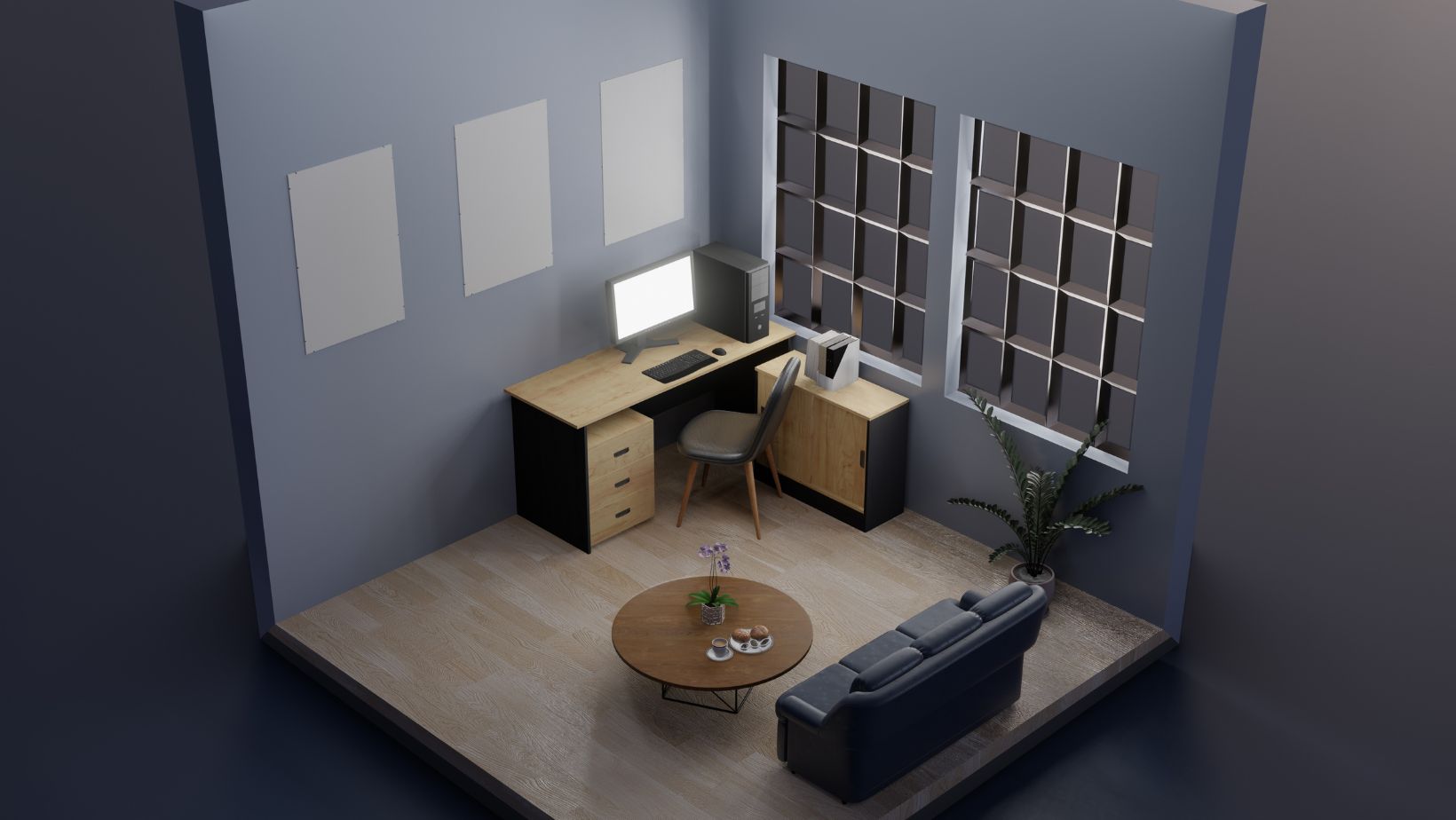
The way businesses operate has evolved dramatically in recent years, driven by technological innovation and changing consumer expectations. One of the most transformative tools reshaping industries is 3D furniture visualization, a technology that allows businesses to create, display, and interact with virtual models of furniture in a dynamic and realistic manner.
For businesses in the furniture industry, whether manufacturing, retail, or interior design, 3D visualization has become a game-changer. It enhances the customer experience, streamlines operations, and drives sales by merging practicality with creativity. This article explores the importance of 3D furniture visualization, its benefits for businesses, and how it is redefining customer interactions and operational efficiency.
What Is 3D Furniture Visualization?
At its core, 3D furniture visualization uses advanced digital tools to create lifelike, three-dimensional representations of furniture items. Unlike traditional photographs or sketches, these models are interactive, customizable, and accessible on various platforms, including websites and mobile devices.
Customers can rotate, zoom in, and modify virtual furniture to suit their preferences, experimenting with colors, materials, sizes, and finishes. For businesses, this interactivity provides a unique opportunity to showcase products dynamically, improving engagement and facilitating informed decision-making.
How Businesses Leverage 3D Furniture Visualization
The adoption of 3D visualization spans various business applications, from retail to manufacturing. Here’s how different sectors benefit:
Retail: Creating Immersive Shopping Experiences
In furniture retail, customer satisfaction hinges on visualization. Traditional methods, such as static images or showroom visits, often fail to give a complete sense of how a product will look in real life. By integrating 3D visualization tools into online platforms, retailers offer customers an immersive shopping experience where they can explore products in-depth, customize designs, and even place them in a virtual room using augmented reality.
For instance, a customer purchasing a sofa online can use 3D tools to change upholstery materials, adjust dimensions, and visualize how the piece will look in their living room—all without leaving their home.
Manufacturing: Streamlining Design and Production
Furniture manufacturers can use 3D models to accelerate the design process and eliminate inefficiencies. Virtual prototypes enable designers to spot flaws early, reducing the need for physical prototypes. This not only saves costs but also speeds up time-to-market for new products.
Moreover, manufacturers can collaborate seamlessly with designers and sales teams using 3D tools. A shared, detailed visualization ensures all stakeholders are aligned, minimizing misunderstandings and costly errors during production.
Interior Design: Enhancing Client Collaboration
Interior designers often face the challenge of translating client ideas into tangible designs. 3D furniture visualization bridges this gap by allowing designers to present virtual layouts that include realistic furniture models.

Clients can walk through these digital spaces and provide instant feedback, ensuring the final design aligns perfectly with their vision.
Benefits of 3D Furniture Visualization for Businesses
The business advantages of 3D furniture visualization are both tangible and transformative. Here are the key benefits:
Enhanced Customer Engagement
Interactive 3D visualizations captivate customers by allowing them to explore and customize products in ways that static images cannot. This deeper level of engagement leads to higher conversion rates, as customers are more confident in their purchasing decisions.
When paired with augmented reality, businesses can offer customers the ability to see how furniture will look in their actual spaces. For example, AR apps let users virtually place a dining table in their kitchen, removing uncertainty and fostering trust.
Improved Marketing and Brand Image
Businesses can use 3D visualization to create compelling marketing content, from interactive product catalogs to virtual showrooms. These tools not only attract more customers but also position the brand as innovative and forward-thinking.
For instance, a company that incorporates virtual reality showrooms can offer a fully immersive experience, allowing customers to “walk through” spaces filled with their furniture collections. This cutting-edge approach sets businesses apart in a competitive market.
Cost and Time Efficiency
For manufacturers, 3D visualization reduces the need for physical prototypes, which can be expensive and time-consuming to produce. Instead, virtual models serve as accurate representations for design approvals and marketing purposes.
Additionally, the ability to instantly showcase customizations—such as material changes or dimensional adjustments—saves significant time during the sales process. Sales teams can quickly respond to customer inquiries without waiting for physical samples.
Reduced Returns and Higher Customer Satisfaction
One of the most significant challenges in the furniture industry is managing product returns, which are often due to mismatched expectations. With 3D visualization, customers know exactly what they’re getting before they buy. This transparency minimizes dissatisfaction and builds trust, leading to stronger customer relationships.
Future Trends in 3D Furniture Visualization
As technology advances, the capabilities of 3D furniture visualization are expanding. Here are some exciting trends shaping its future:
Augmented Reality Integration
AR is already transforming how customers shop for furniture. In the coming years, AR tools will become more sophisticated, offering seamless integration with mobile devices and wearables. This will make it even easier for customers to visualize products in their spaces.
Virtual Reality Showrooms
Virtual showrooms are emerging as a powerful sales tool, especially for luxury brands and large retailers. These immersive environments allow customers to explore furniture collections in detail, creating a memorable shopping experience.
AI-Driven Customization
Artificial intelligence will play a key role in enhancing 3D visualization tools. AI algorithms can analyze customer preferences and recommend personalized furniture options, streamlining the shopping process and boosting sales.
Cloud-Based Collaboration
For businesses working across teams or locations, cloud-based 3D tools will enable real-time collaboration.

Designers, sales teams, and customers can work together on the same models, ensuring everyone stays aligned and projects progress smoothly.
Challenges and Opportunities
While 3D furniture visualization offers immense potential, businesses must address challenges such as the cost of software and hardware implementation, staff training, and ensuring compatibility across platforms. However, the benefits—improved customer satisfaction, reduced costs, and higher sales—far outweigh these initial hurdles.
Companies that invest in 3D visualization early will not only meet customer expectations but also set new standards for innovation in the industry.
Conclusion
3D furniture visualization is revolutionizing the way businesses operate, from design and manufacturing to marketing and sales. By offering immersive, interactive, and customizable experiences, it enhances customer satisfaction, streamlines operations, and positions businesses as leaders in innovation.
As technology continues to evolve, the possibilities for 3D visualization are limitless. For businesses ready to embrace this transformative tool, the future promises increased efficiency, stronger customer relationships, and a competitive edge in a rapidly changing market.















